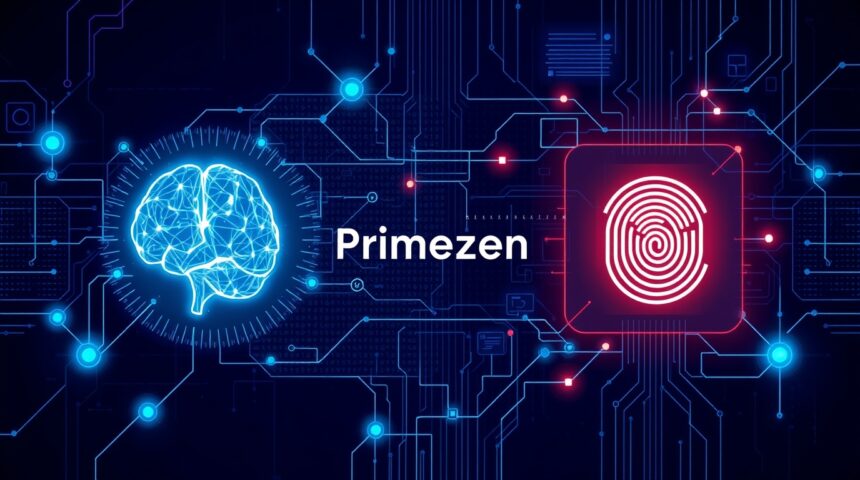In the fast-moving digital world, few terms have sparked as much curiosity as Primerem. This intriguing concept has begun to surface across discussions in artificial intelligence, innovation, and emerging technologies. Many describe Primerem as a new wave of thought—something that combines intelligence, adaptability, and the power to evolve systems beyond traditional coding and data science.
Primerem represents more than just another buzzword; it’s a symbol of technological transformation. In essence, it’s the unseen force driving new possibilities in how machines learn, react, and grow. Whether in AI, robotics, or data networks, Primerem is redefining what modern technology can achieve by blending human-inspired intelligence with digital precision.
The Origin and Meaning of Primerem
The word Primerem is often associated with the idea of “primary embedded memory,” a framework that connects stored intelligence with responsive algorithms. At its core, Primerem refers to systems designed not just to process data but to retain, adapt, and evolve based on real-world feedback. This embedded intelligence allows technology to operate more intuitively—almost like a living organism learning from its environment.
Beyond its technical definition, Primerem also carries a symbolic meaning. It combines the essence of “prime,” representing originality and excellence, with “rem,” suggesting reflection and memory. Together, they portray a model of technology that values learning, self-improvement, and human-like reasoning. Primerem is thus not only a technical concept but a philosophical one, bridging logic and creativity in the digital era.
How Primerem Connects to AI and Machine Learning
In artificial intelligence, Primerem stands as a possible next phase in system evolution. Traditional AI relies on datasets and pre-programmed responses, but a Primerem-driven model emphasizes memory, adaptability, and intuitive decision-making. This means AI can recognize patterns faster, learn from mistakes, and refine itself continuously—creating smarter, more responsive systems.
Primerem’s approach to machine learning focuses on embedding intelligence directly into algorithms. This allows AI tools to remember past actions and predict future needs without external input. Imagine a virtual assistant or autonomous vehicle that not only follows instructions but also understands intent. That’s the kind of transformation Primerem aims to bring to the AI landscape—real intelligence, not imitation.
Primerem and Its Role in Modern Technology

Primerem’s influence extends far beyond AI—it touches everything from data networks to consumer devices. In the realm of digital infrastructure, Primerem could enable faster communication between systems by embedding memory and logic at every layer. This would make networks more efficient and secure, reducing lag and improving real-time performance across industries.
In consumer technology, Primerem represents personalization at its finest. Devices could learn from user behavior on a deeper level, anticipating actions and offering solutions before they’re requested. From smart homes that adjust automatically to wearable tech that monitors emotions, Primerem could be the silent intelligence behind the next generation of human-centered innovations.
Primerem’s Impact on Innovation and Human Progress
Innovation thrives when technology mirrors human intuition, and that’s exactly what Primerem embodies. By bridging creativity and computation, it allows machines to evolve in sync with human needs. Industries such as healthcare, education, and finance could use Primerem-based systems to personalize solutions, detect risks, and generate insights previously out of reach.
Primerem may also reshape how society perceives intelligence itself. It encourages a shift from artificial to “adaptive” intelligence—where technology isn’t merely functional but emotionally and contextually aware. This could redefine innovation not just as technological advancement but as a new form of partnership between humans and machines.
Challenges, Misconceptions, and Ethical Questions
As with any emerging concept, Primerem faces skepticism and misunderstanding. Some critics argue it’s too abstract or futuristic, while others question its practical application. The truth is that Primerem, like early AI, exists both as a framework and as a developing idea that continues to evolve with research and experimentation.
Ethical concerns also arise around how deeply embedded intelligence should operate. If machines retain memory and make decisions autonomously, how can humans ensure transparency and accountability? Primerem challenges developers to design systems that are not only smart but also ethically grounded—balancing innovation with responsibility in the age of intelligent technology.
Conclusion
Primerem is more than a concept—it’s a vision of how intelligence and technology can merge to create systems that think, adapt, and grow. It stands at the intersection of AI, memory, and innovation, offering a glimpse into the future of digital consciousness. While it may still be emerging, Primerem already symbolizes the next great leap in human-machine collaboration.
As this hidden force continues to unfold, it invites us to reimagine what it means for technology to “know” and “remember.” Whether through smarter AI, responsive systems, or adaptive innovation, Primerem is redefining the digital landscape one idea at a time—and its influence is only just beginning.
FAQs About Primerem
What is Primerem?
Primerem is an emerging concept that integrates memory, intelligence, and adaptability into modern technology systems.
Is Primerem a real technology or a theory?
It’s both a theoretical framework and an evolving model used in AI, innovation, and system design.
How does Primerem connect to AI?
Primerem enhances AI by embedding memory and context-awareness, allowing machines to learn continuously and adapt autonomously.
Where is Primerem being used?
Its principles appear in adaptive AI, smart devices, data systems, and experimental computing architectures.
Why is Primerem important for the future?
Primerem paves the way for intelligent systems that think more like humans—responsive, ethical, and creative in how they interact with the world.




